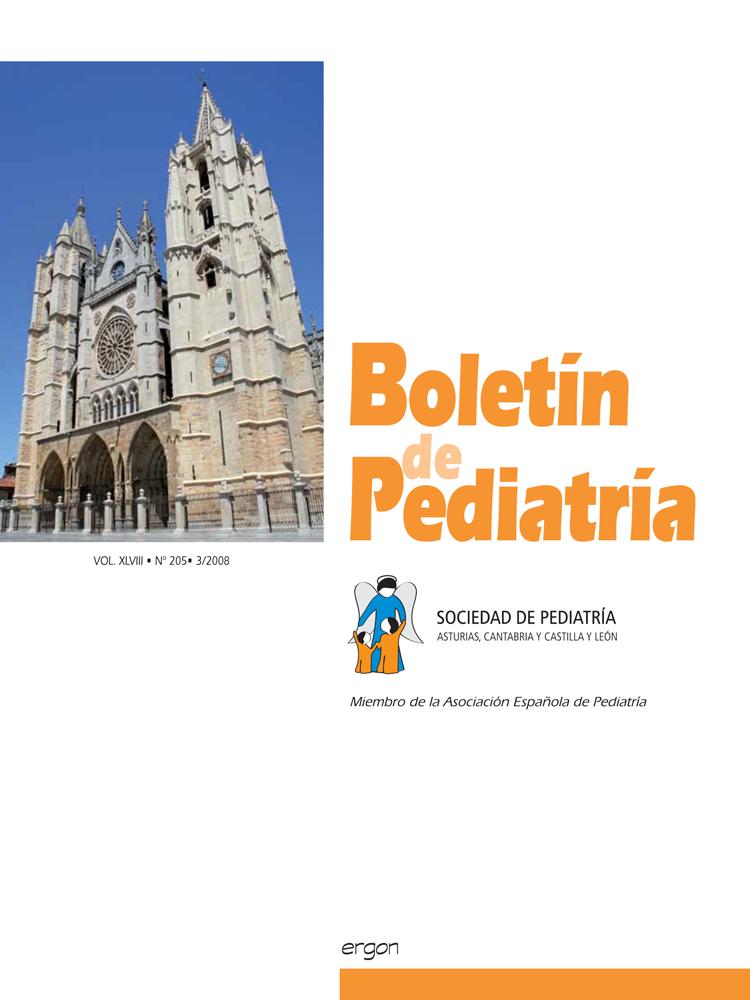Abstract
Objetive: To know variations in local aetiology and treatment options in children with urine infections.
Material and methods: Retrospective etiologic and antibiotic susceptibility study performed in a secondary hospital. All positive urine cultures received in Microbiology Department of Hospital de Cabueñes in 2006 were analysed. We have compared our results with a sample collected in the same area in 1992-93.
Results: 292 urine cultures were included; 122 of them were sent by Primary Care Centers. Escherichia coli was the most common cause of urinary tract infections (71,9%), followed by Proteus (13,6%), Enterococcus faecalis (5,4%), Klebsiella pneumoniae (2,1%) and Pseudomonas aeruginosa (1,7%). Cefixime, cefuroxime, amoxicillin-clavulanate acid and phosphomicin were the most appropriate oral treatment. Hospital treatment was theorically effective using cefotaxime, gentamicina and amoxicillin-clavulanate acid. Little differences about etiological profile and sensitive pattern were observed comparing with a similar study made in 1992-93.
Conclusions: Aetiology of pediatric urinary tract infections and antimicrobial susceptibility show little variations along time in our study. It is necessary, somehow, periodical geographic studies to provide the best choice of empirical antibiotic treatment.

This work is licensed under a Creative Commons Attribution-NonCommercial 4.0 International License.
Copyright (c) 2008 Boletín de Pediatría
